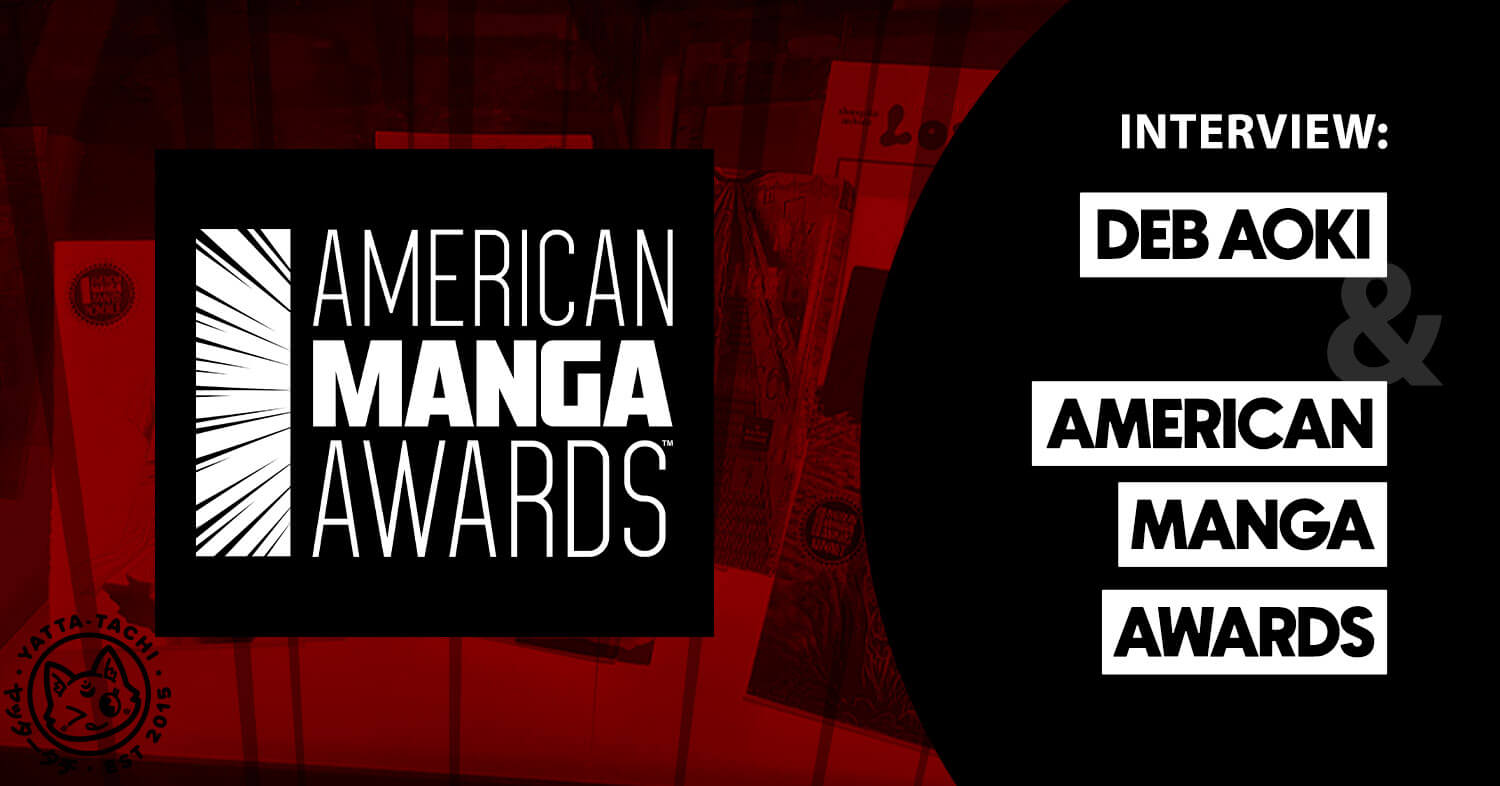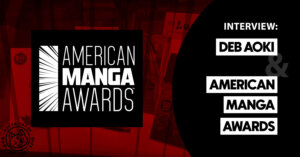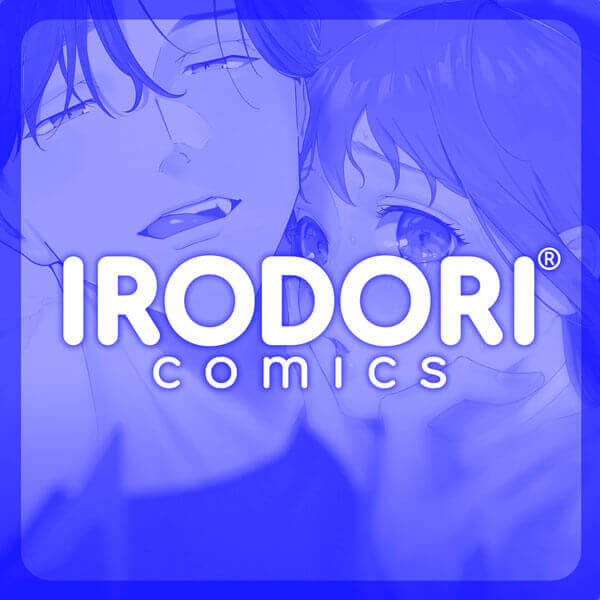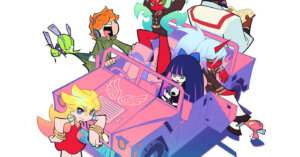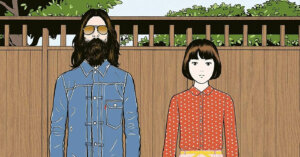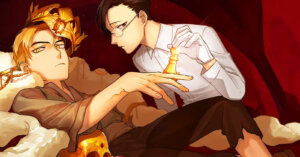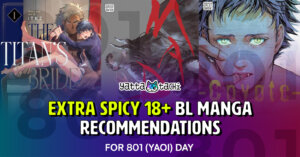This year saw the advent of the American Manga Awards, the first ever awards ceremony recognizing the publication of Japanese comics in the United States. It brought together representatives at all levels of the industry to celebrate great translation, lettering and production design as well as notable titles from the past year. Frederik Schodt received the ceremony’s first Hall of Fame award. Schodt is the author of Manga! Manga!, the first ever book written about manga in the English language.
Yatta-Tachi had the opportunity to speak with Deb Aoki, the overseer of the American Manga Awards Planning Committee. Aoki is an experienced journalist and manga industry chronicler. She is also a member of the podcast Mangasplaining, which is now licensing titles (including the AMA-nominated Search and Destroy and Okinawa) for US publication via its newsletter spin-off Mangasplaining Extra. The two of us discussed the importance of expertise, Fred Schodt’s importance and why recognizing older comics matters in an evolving manga industry.
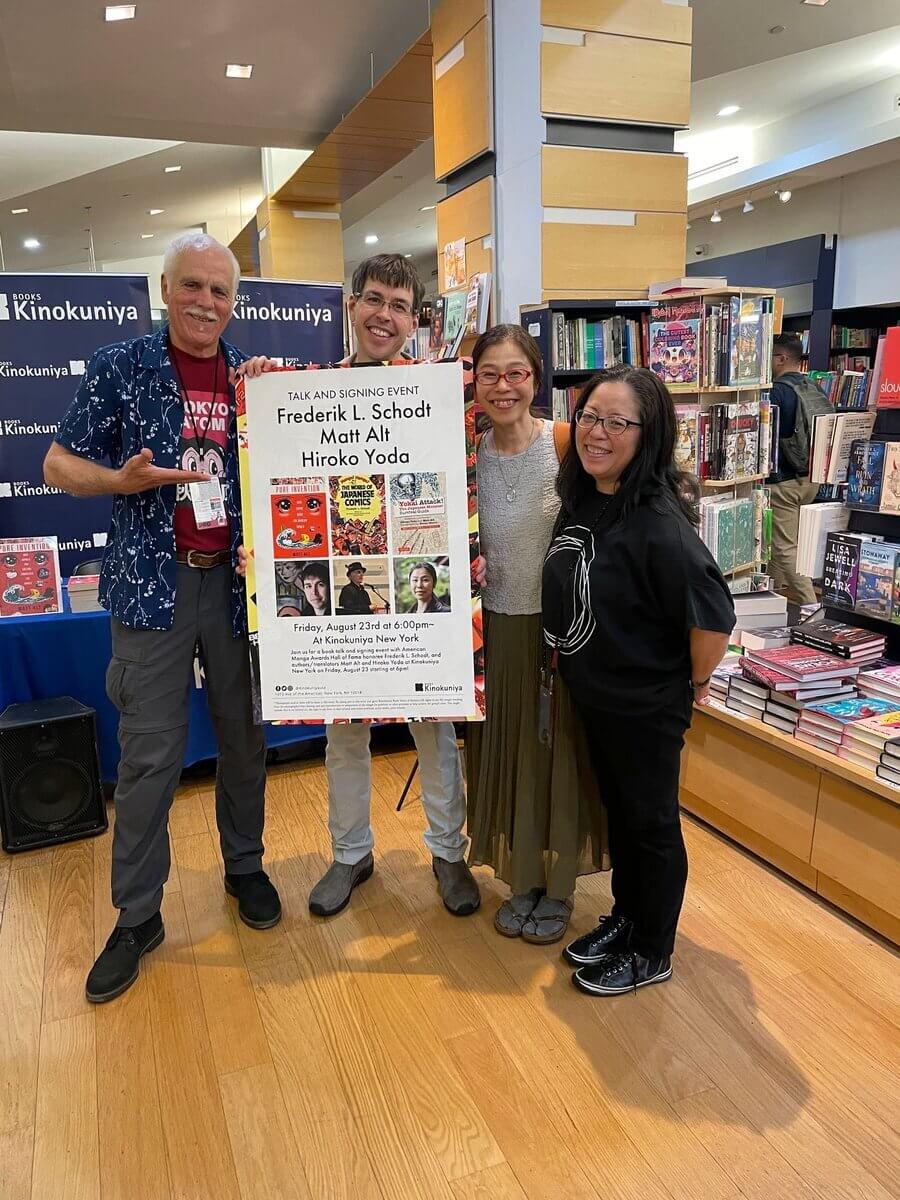
Editor: This interview has been edited for length and clarity of content.
I have this Google Doc…
ADAM WESCOTT: When were you brought onto the American Manga Awards Planning Committee?
DEB AOKI: I first started talking with the people at LeftField Media last November during AnimeNYC 2023. Even before that, maybe a year and a half ago, I started imagining what an awards ceremony might look like for the American manga industry. I asked friends who are translators, letterers, manga editors and so on. What would it take to make this happen? How could we make it feel prestigious and professional? My colleagues passed around a Google Doc that expanded to six or eight pages.
We knew that it couldn’t just be an ad hoc thing we did on our own. It had to be associated with a bigger event or organization. So when Lance from LeftField asked “We’re thinking of doing the Manga Awards,” I shot back “I have this Google Doc. Would you like to see it?”
WESCOTT: You’d been planning for something like this for a while, then.
AOKI: As a journalist and as someone who knows both freelancers and full-time employees that work in the manga industry, I could sense disappointment at not being recognized. You could be nominated for the Eisners or the Harveys or even the Anime Awards. But you wouldn’t win, or the winners would be somebody like…well, remember when the first Heavy Metal Recording award came out for the Grammys and Jethro Tull beat Metallica?
Manga has always been treated as an afterthought in the world of US comics. People said, “it’s that weird Asian stuff which kids read backwards.” But I think that manga’s awesome. Bringing it to print in English requires people who have a lot of talent, skill and passion for the medium.
Manga lettering has a high degree of difficulty. You’re not just making original lettering, but replicating or replacing lettering that was there in the Japanese original, which includes a retouch. It takes artistry to transform a different alphabet set into English sound effects with the same dynamism. You have to set horizontal, right to left text in often very tall, thin word balloons. You know how people say that Ginger Rogers did everything Fred Astaire did, but backwards and wearing heels? That’s what manga lettering is.
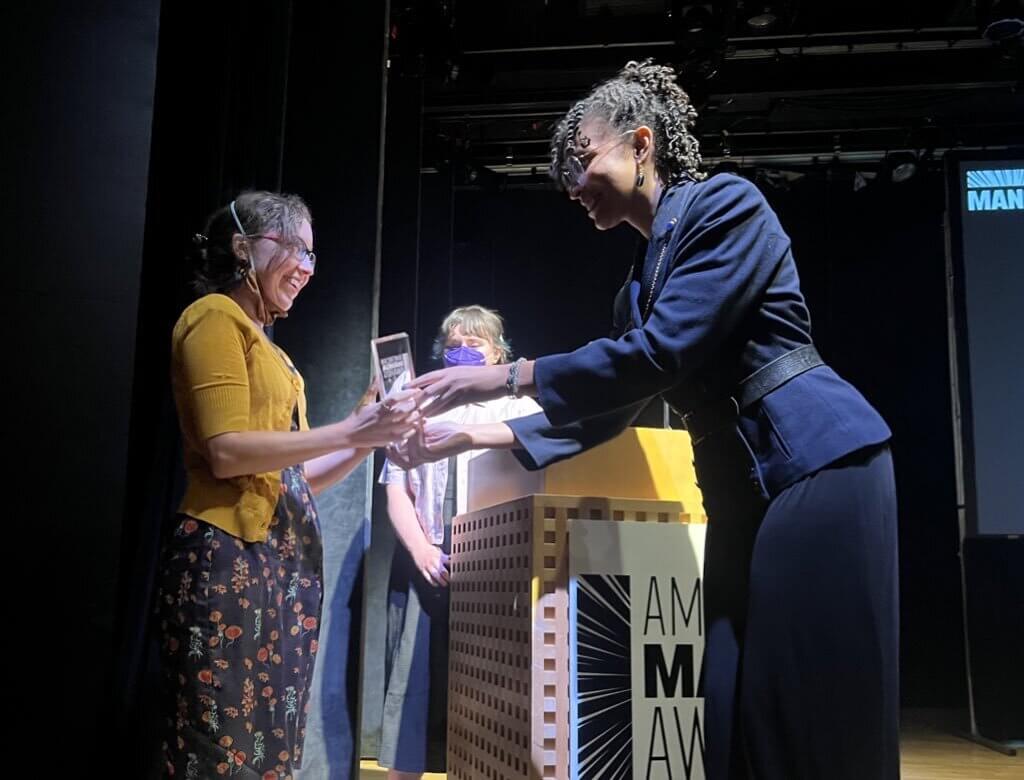
I thought of it like the Academy Awards
WESCOTT: It’s tough enough just to get comics readers to recognize letterers in the American comics industry. Has the Eisners ever recognized a manga letterer?
AOKI: My suspicion is almost none. [Interviewer’s note: I double-checked, and no manga letterer has ever won an Eisner for Best Lettering.] I saw over the years how on social media, manga letterers and translators would say, “this is my work, I’m proud of it, and this is what goes into it.” So when we came up with the Manga Awards, we decided it had to be two things. It had to recognize great manga storytelling, and it had to recognize the professionals who bring it out in English.
WESCOTT: Reading people’s responses as the rollout happened, I remember Zack Davisson saying that just recognizing folks working in the American manga industry was already a huge get. There haven’t been very many opportunities to recognize those people.
AOKI: One of my guiding principles for the awards was how we were organized. The manga categories were chosen and nominated by five manga specific judges: librarians, journalists, influencers, editors and so on. But for translation, lettering and publication design, there were two judges each who came from those respective professional categories. I thought of it like the Academy Awards. The first round of nominations come from people in that field. I think only translators who can read Japanese and English and understand the process can determine what masterful translation looks like.
We recruited Shigekazu Watanabe, a bookseller, and Sasha Head, who designed Image+ Magazine, as the judges for Best Publication Design. They could look at the intersection of design choices and lettering, and express articulately what they liked about it.
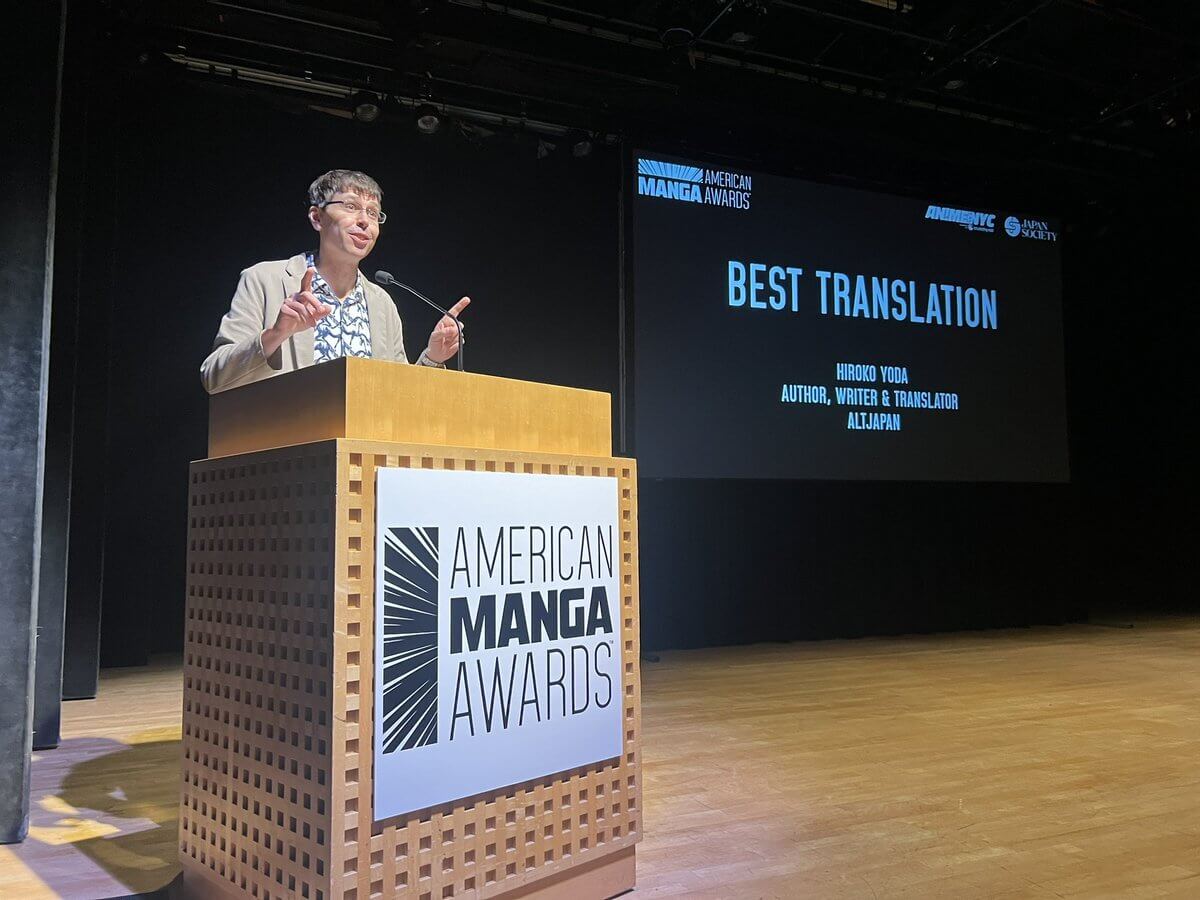
Translation is fluid
WESCOTT: From my perspective as a journalist, translators have had to fight for reviewers to acknowledge their work, too. Even though nearly all manga that comes out in the United States is translated from Japanese.
AOKI: In the early days of English translated manga, it was hit or miss whether a translator’s work would be credited in the indicia. It was the translators themselves who said, “give us credit. Show us respect.”
I knew that the Best Translation award would be the most controversial one, because there are so many strong feelings about it. A lot of those strong feelings come from people who don’t speak or read Japanese. They assume things based on what they see on Google Translate or in scanlations. As a six year judge for the Manga Translation Battle, my professional translator colleagues taught me that the platonic ideal of a manga translation is not word for word. It’s the kind where if I read it as an English reader, I would receive the same feeling or impression that a Japanese reader might receive.
I grew up in a time when Japanese words and terminology, even words like “manga,” were not well known. At AnimeNYC’s yokai panel, Hiroko Yoda and Matt Alt were saying that before their book Yokai Attack! was published fifteen years ago, the word “yokai” wasn’t well known in the US. It would have been translated as “demon” or “spirit.” Which isn’t necessarily correct, because yokai are their own unique thing. Translation is fluid.
For the translation award, it was important that I found judges who used to do manga translation but aren’t doing it professionally at the moment. Matt and Hiroko translated Doraemon and Dorohedoro, but that’s not their main job right now. Another example would be the manga lettering judges, Nate Piekos and Tom Orzechowski. These are people who know and appreciate manga lettering but are not out there fighting for these jobs. We chose folks who were knowledgeable but wouldn’t be in a position to review their own work for consideration.
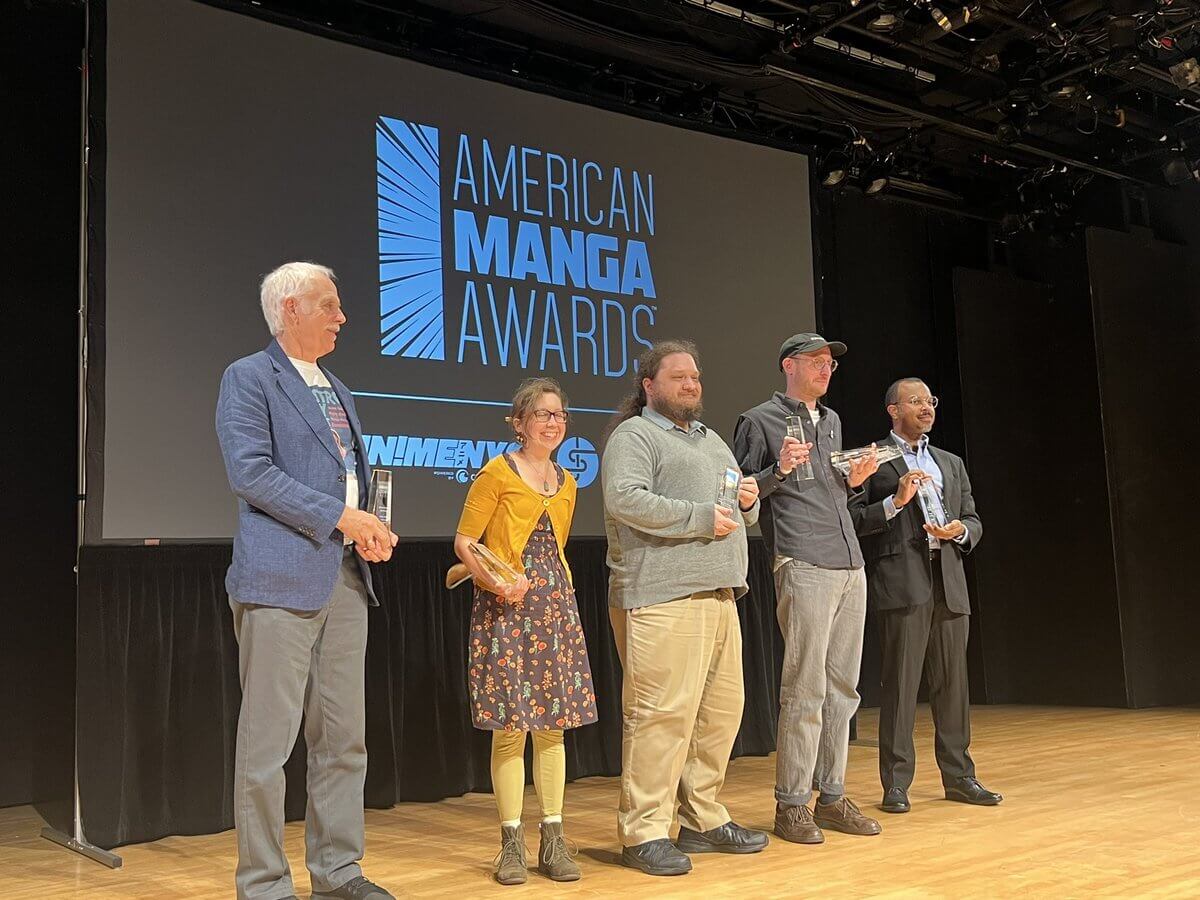
Professional credentials
WESCOTT: I see. So then the second round of voting was professionals coming from all around to cast their opinions.
AOKI: That was important to us as well, that voting was professionals only. The Oscars and Grammys were my guiding principle. Only music professionals can vote at the Grammys. Not just anybody who is an actor or makes films can vote in the Oscars. You have to be a member of the Academy, right? You need professional credentials to be considered worthy to vote. To me, that was important to make awards that were professional. Then you would know that even the nomination alone was an honor, because you were recognized by your peers: real, respected seniors in the field.
For Best Publication Design, I was impressed by the thought and care Sasha and Watanabe-san put into the nominations. They respectfully argued about certain things. But they’d say, “there’s so many thoughtful details in the Orange box set.” The choice of font, how they use this particular piece of artwork so that the heads of the main characters are big on the side, but come together in the back with them holding hands and framing the other characters. Sasha was raving about details that went into every aspect of the package, details I didn’t notice. And I come from a graphic design background as well, at Adobe.
The winner for Best Publication Design, Adam Grano’s work for My Name is Shingo, is wholly original. It’s not a reproduction of the Japanese edition, but captures the mood of the book with foil and layered computer graphics. In his acceptance speech Adam said, “thank you to my editor for being on board with my vision. Thank you to the managing editor for okaying the budget.” The people from Dai Nippon Printing US came up to me at San Diego ComicCon to say, “we’d love to come to the awards.” I said, “Oh, sure, we’d love to.” And they said, “yeah, we printed My Name is Shingo! We’re so proud of it.” Everything that has happened since the awards started has exposed me to the gratitude people are feeling for being recognized.
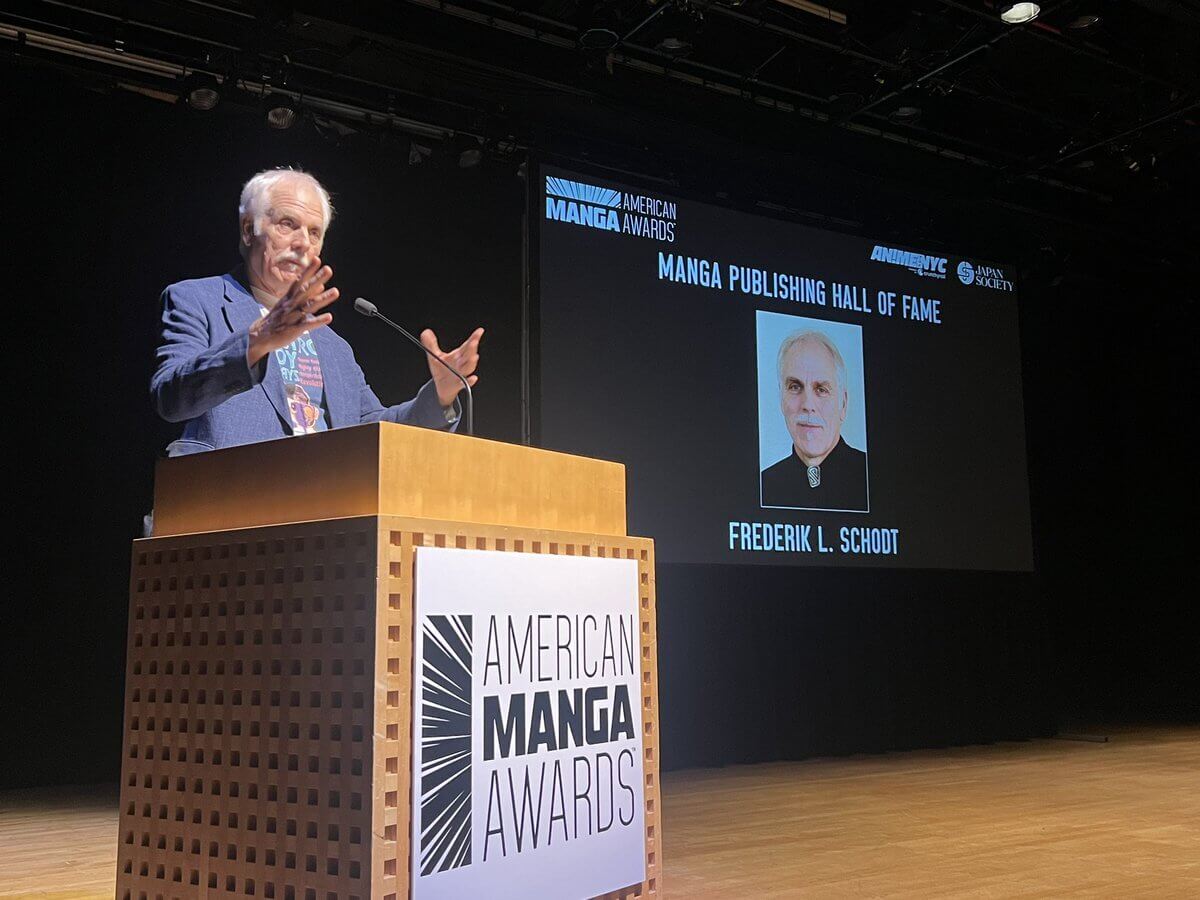
You Gotta Have Wa
WESCOTT: The first Hall of Fame award at the American Manga Awards went to Frederik Schodt, the author of Manga! Manga! What role does this award play in preserving institutional knowledge?
AOKI: We were thinking, “how do we make this into an archive that is always available for people to see?” The presentation we did at the award ceremony to recognize Fred felt very barebones, to me. But it was so amazing to see Fred come up on stage. When I first invited him to come, he said, “come on, really? What am I supposed to say when I go up there?” I told him, “just be you, just say what you want to say. Speak from your heart.” This guy, who hung out with Tezuka, met almost all the giants of the manga world, was recognized by the Emperor of Japan…he was choking up out there on stage. He’s humble and kind and knowledgeable but did not take any of it for granted.
The Japan Society is a beautiful facility. Schodt shared the same stage that Japanese emperors, prime ministers and famous directors like Kurosawa and Shinkai all once stood on. It’s a classy looking venue, even for a relatively small auditorium. It was great to see the love in the room. People were so happy to be recognized and to be with each other.
WESCOTT: Everybody in the room knew who Schodt was, right?
AOKI: Oh yeah, absolutely. I started reading manga before Manga! Manga! came out. But Schodt’s book gave me context. Things you would never know if your only exposure to manga was a couple of manga magazines your uncle had at his house, or the issue of Nakayoshi your aunt gave you. Being one of the few Asian American writers covering Japanese comics in English, manga was my window into a culture that I didn’t know because I’m fourth generation. It made me proud to be Japanese-American.
Fred didn’t come to manga as an otaku. The inspiration for Manga! Manga! was You Gotta Have Wa, a book about Japanese baseball by Robert Whiting. It’s about how baseball is played differently in Japan, even though it’s an American sport. Schodt was inspired by that book to write about how Japanese comics might serve as a window into the culture. I thought that was an important distinction; he didn’t come to this material as a part of fandom because, frankly, it didn’t yet exist at that time.
The publication of Manga! Manga! predated the manga explosion. It barely touches on the days when Shonen Jump was at its absolute peak. 6 million copies a week, what people call the Golden Age. Manga! Manga! predates Akira. It predates the lifetime of many current fans. So yes, Fred had to be the first Hall of Fame recipient, no question. He was my gateway into this world, and the reason why I love and do this work.
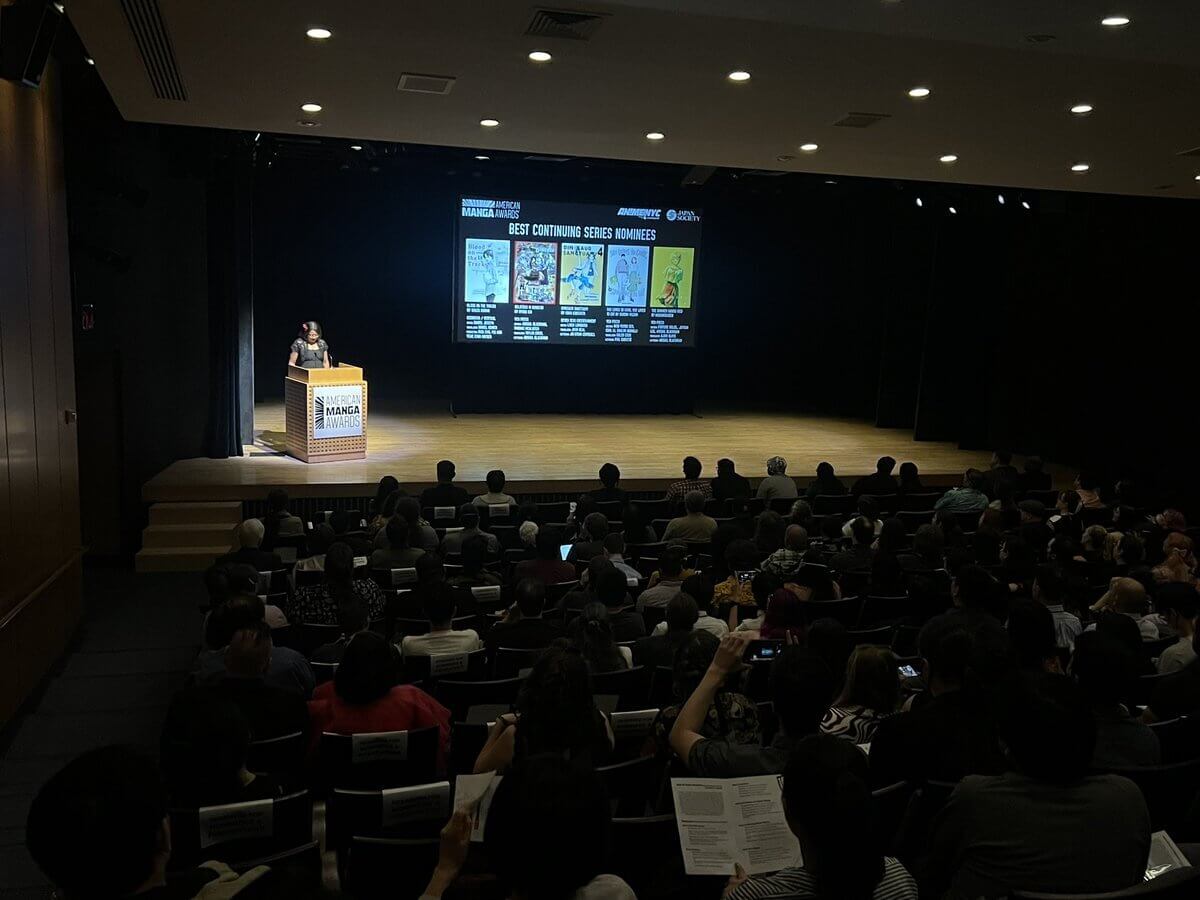
Amazing sound effects
WESCOTT: Regarding the American Manga Awards, which new categories would you like to bring in for future ceremonies?
AOKI: When I first started doing research, I sent out surveys to people in the industry I knew. I asked them to vote for categories, how to handle categories and so on. We had a short list that was just on the cusp of being accepted. Not this year, but maybe next year.
One of the popular ones was Best Light Novel. That has its own challenges; we’d have to hire separate light novel nominating judges. If we gave people 50 light novels to read in only two weeks, that would be uncool. As it is, our five manga judges had to read over 100 books. Our guideline to the publishers was, three books max, no matter how big or small the company. Initially I thought, well that’s too bad, because big companies like Kodansha, Viz and Yen Press have so many great books. But others said to me, “no, that’s for the best.” We had heated discussions about it, but I think it was better to keep it tight.
WESCOTT: Did you think about separating small from large presses to ensure they were recognized? Companies like Glacier Bay or Star Fruit?
AOKI: I think putting them all in the same group benefited them. I was especially proud of the judges for picking such a nice mix of books for Best New: from Viz Media, Glacier Bay, Kodansha, Seven Seas. Not just their top-selling hits, but quirky stuff like Soara and the House of Monsters. That was a complete dark horse. Never heard of that one before, but all the judges were raving about it. Shaenon Garrity gave it to her 10 year old son to read and he immediately wanted more. The judges were not swayed by whether a manga series came from a big or a small company or if it was on the bestseller list.
For Best Lettering, we had a J18 title, a hentai manga. They’ll Make a Man Out of You. Tom Orzechowski said, “This is masterful. Amazing sound effects.” When he said that, I thought to myself, “this is exactly why we did it this way. The judges look at the quality of the lettering, not the content of the story or the popularity.” While the voting is another matter altogether, the nominations are such a well chosen set of titles.
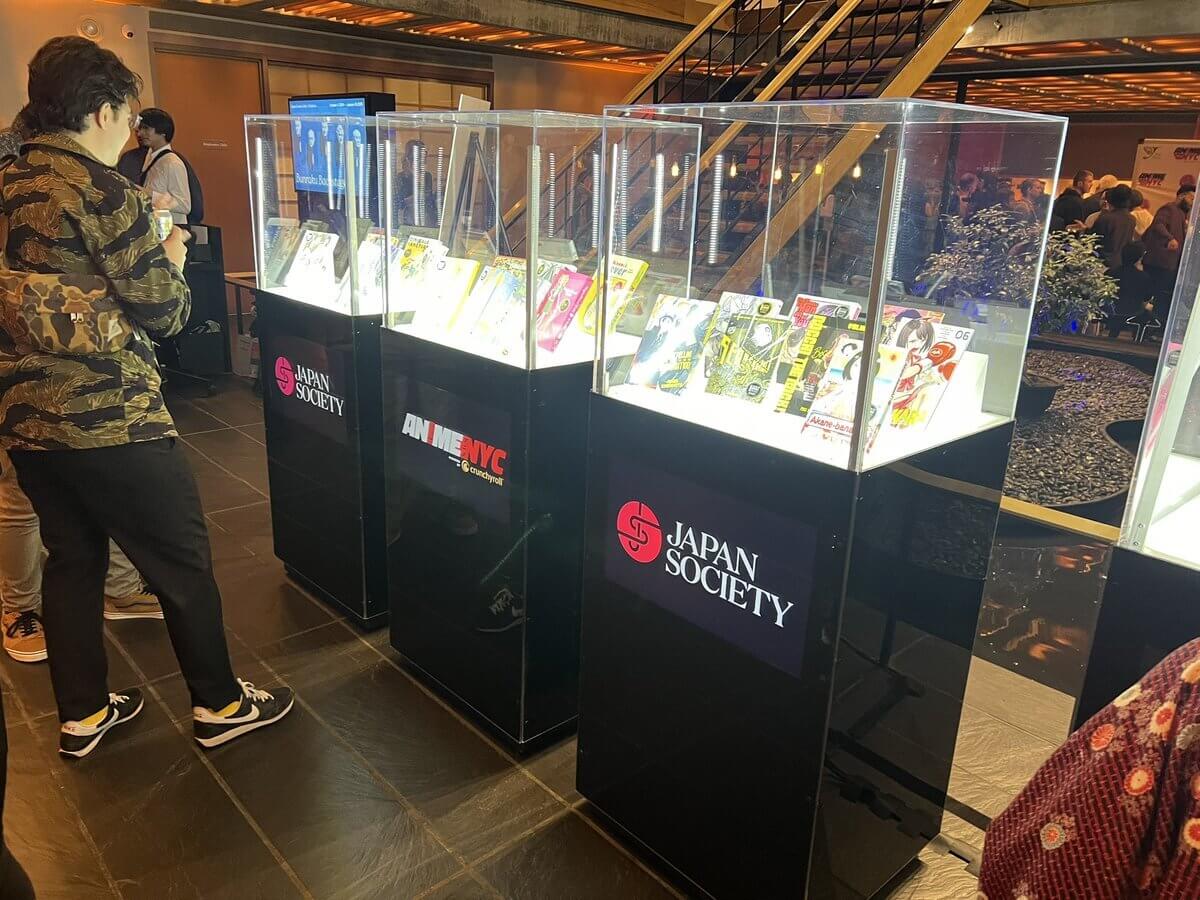
A healthy manga industry
WESCOTT: I was particularly amazed by the Best New Edition of Classic Manga section. Any one of those titles would be my pick for best of the year, even including newer manga.
AOKI: It was important to me that we included that category. No matter what anyone says or does, the top selling genre will be shonen manga with an anime tie-in. This award was my way to shine a spotlight on manga that might not be at the top of somebody’s Must Buy list. Our requirement for Best Classic Manga was anything published within the last 20 years, before 2004 in Japan. But there are so many legendary, influential manga published before 1980 that have a zero to nil chance of being published in English. Even so, it’s a healthy manga industry that’s making all of this possible, including titles we thought were impossible. Legend of Kamui is coming this Fall. Tomorrow’s Joe from Kodansha is out in December. Even Hajime no Ippo is available in English via K-MANGA.
WESCOTT: So Legend of Kamui in English, the survival of Glacier Bay Books and perhaps even the American Manga Awards are all feasible because of the success of manga in the United States. What happens when the bubble pops, though?
AOKI: I would poke a hole in your idea that there’s a bubble. We assume there is one because we’ve been through one before, right? Manga reached incredible highs in the early 2000s, then imploded. Borders closed, there was a recession. All kinds of companies rushed into the industry to publish manga of varying quality. History repeats, it pays to remember it, but you can recognize when the circumstances are different. I don’t think we’re going back to a world where manga becomes a niche interest again. The people who make manga now are largely not making the same mistakes they did before. They’re being very careful about what they print, because it’s a commitment. Digital gives them additional options.
Japan is also recognizing the impact of the global market. It’s on a demographic cliff, right? There are not as many young people anymore. Manga is bigger than ever, but more of it is digital. Magazines are in a sharp decline. For the first time, the US market’s gross sales are bigger than France’s.
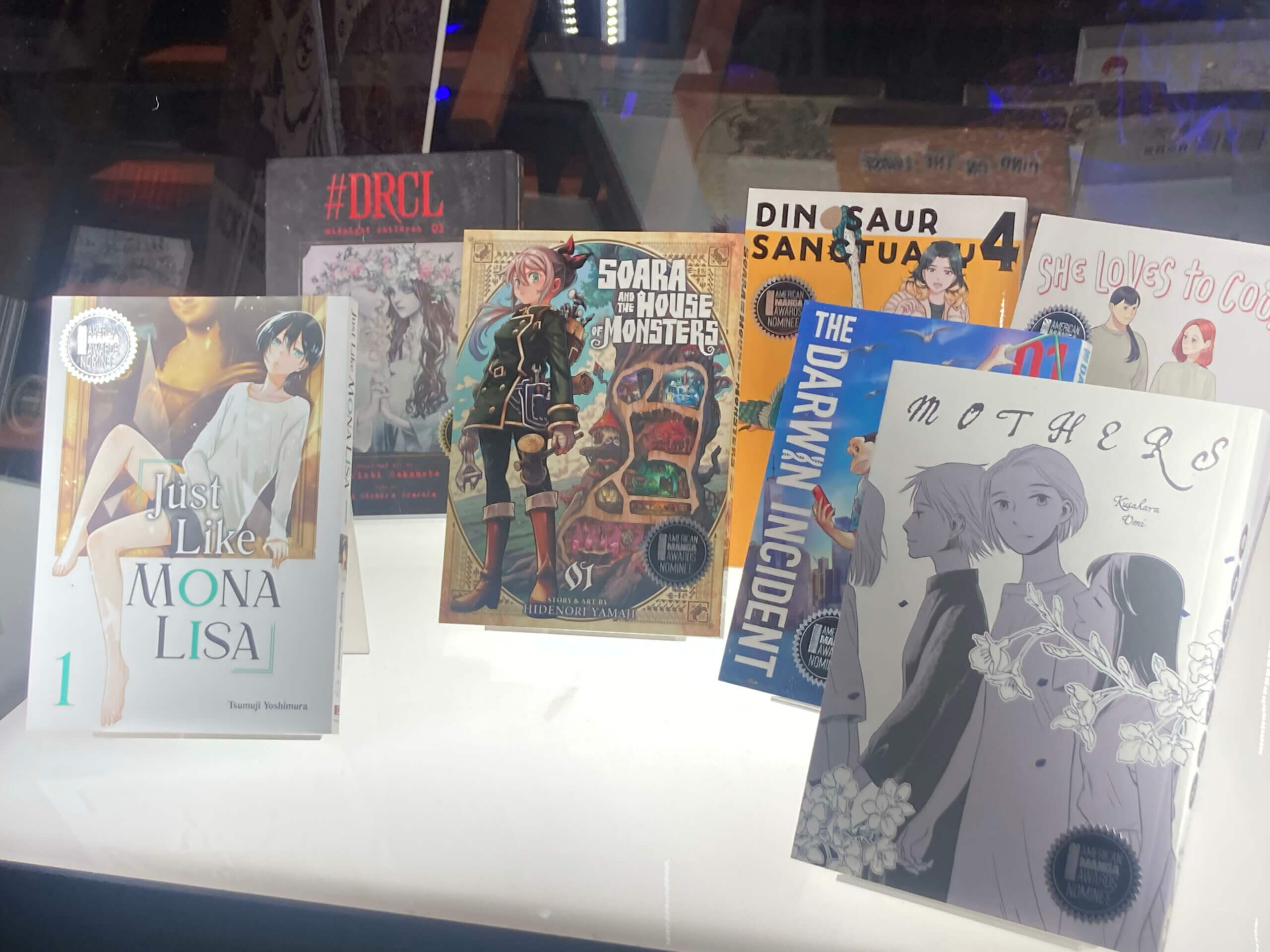
You know we’re rooting for you, yeah?
WESCOTT: I never would have expected that!
AOKI: France still has greater variety and penetration per capita. In Japan, per capita reading of manga far, far outpaces us and France. But Japan is smarter now about business, and so is the US. During the 2000s crash, anime was on Toonami, a couple cable channels, and DVDs if you were lucky. Now it’s on all the streaming channels. Anyone can watch it wherever they like, not just on Crunchyroll but Hulu and Netflix too. I heard someone at Scholastic say their kid was dressing up as “that green haired guy from that Netflix show with three swords.” I said, “Oh, you watched One Piece!” Young people are getting into it earlier. I think that you just can’t deny the appeal of manga.
The Manga Awards wasn’t something that I did alone. It was only possible because of MK Goodwin and Lance Heiskell from LeftField Media, Peter Tatara from the Japan Society. Kuo-Yu Liang from Ku Worldwide. Without the support, belief and guidance of these people, it couldn’t have happened. Plus the judges, the industry people that pushed for it, the sponsors…we had Scholastic, Hoopla, Saturday AM, Viz Media, all very important. The Japan Society also sent out press releases to the Japan public press.
One of the most rewarding things was seeing Japanese manga artists on Twitter reacting to these nominations. The author of Doll-Kara, which was translated by David Evelyn, sent out Tweets from Japan saying, “Congratulations David. You know we’re rooting for you, yeah?” David was so touched by that. Even the author of Dinosaur Sanctuary was saying, “wow, to be recognized overseas!” That series, Mothers, Soara and the House of Monsters, are not books that have won or been nominated for awards in Japan. We are not just recognizing works that the Japanese industry deems as being important. As a journalist and a fan of manga, I’m glad to be in a position right now where I can not just report on the medium, but help it grow.
Big thank you to our supporters
From their continous support, we are able to pay our team for their time and hard work on the site.
We have a Thank-You page dedicated to those who help us continue the work that we’ve been doing.
See our thank you page